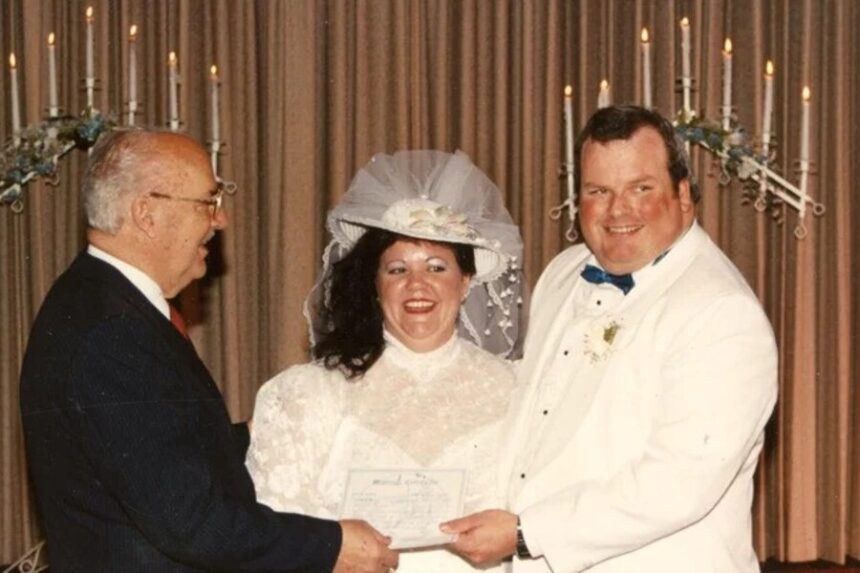In what began as an odd and tragic domestic incident, a California woman was ultimately convicted of murder after claiming she accidentally shot her husband while the couple joked in cartoon voices. The story of Linda Duffey Gwozdz, once marked by laughter and mimicry of characters like Elmer Fudd, turned into a chilling courtroom drama spanning years, two trials, and a divided jury.
On April 26, 2007, Linda called 911 from her Whittier home, saying she had accidentally shot her husband, Patrick Duffey, a radio engineer and gun enthusiast, while he was preparing to go to a shooting range. Linda said they had been joking — reenacting scenes from old cartoons — and she believed the revolver was unloaded when she tried to “fan fire” it, a cowboy-style move. Patrick allegedly leaned into her line of fire at the wrong moment.
When police arrived, they found Patrick dead on the couch with a gunshot wound to the head. There were no signs of struggle, and their teenage sons were not home. Initially, detectives were divided. While Sgt. Shannon Laren grew suspicious, Lt. Shaun McCarthy leaned toward believing Linda’s story, describing her as eccentric but seemingly genuine. Linda was not arrested that day.
What initially looked like an accident became murkier when the medical examiner found two gunshot wounds to Patrick’s head — a detail missed at the scene due to dried blood. This raised serious questions about Linda’s version of events. Detectives began to re-evaluate the case and consulted firearms experts, including Tracy Peck, who explained that the revolver used was double-action — not designed for fan firing like those in old Westerns. She concluded that the shooting could not have occurred as Linda described.
Despite inconsistencies and mounting suspicion, police lacked enough evidence to arrest Linda immediately. In the years following the shooting, Linda remarried, changed her last name to Gwozdz, and moved to Mississippi. Her new husband was a respected saxophone professor. Friends noted her transformation — dyed blonde hair, cheerful demeanor, and an apparent eagerness to move on.
But Patrick’s family remained skeptical. His sister, Katherine Hunt, and brother, John Duffey, pointed out Linda’s conflicting statements. She told police it was an accident, told them Patrick had shot himself, and later admitted at the funeral home that she had pulled the trigger.
Investigators revisited the case with renewed focus. Blood spatter expert Paul Delhauer analyzed photos and concluded Linda had likely shot Patrick at close range while he was asleep and again shortly after. The pattern of blood on her shirt and in the room contradicted her version of standing in one spot and firing by accident.
In 2012, five years after Patrick’s death, Linda was arrested and charged with murder. Her first trial featured extensive forensic testimony, audio of her police interviews, and references to Bugs Bunny and Elmer Fudd. The jury was unable to reach a verdict.
A year later, in a second trial, the prosecution took a different approach: fewer details, no cartoon references, and a focus on the physical evidence. Jurors heard a simpler story: Patrick was lying on the couch when Linda approached and shot him twice in the head.
The defense portrayed the couple as goofy and affectionate. Linda’s sons testified that their parents were playful and often joked in cartoon voices. A firearms expert was called to suggest that fan firing a double-action revolver, while unusual, was not impossible.
But the jury in the second trial deliberated just over a day before convicting Linda of second-degree murder. She collapsed in court as the verdict was read. Three months later, she was sentenced to 40 years to life in prison.
Some jurors from the second trial admitted they would have liked to hear more, including Linda’s police interviews. Others felt the evidence they did receive was sufficient. The contrast between the two trials — one long and complex, the other concise — led some to wonder if too much detail had obscured the truth the first time.
Patrick Duffey’s family expressed relief after the conviction, believing justice had finally been served. But even in victory, the case left lingering questions. What exactly happened in those moments before the gun went off? Why did Linda shoot her husband?
In the end, what started with laughter and cartoon voices ended in tragedy, leaving two sons without parents and a family forever changed. The case of Linda Duffey Gwozdz remains a haunting reminder that sometimes, beneath the surface of humor and eccentricity, lies something far more serious.




